Are you a Quiet Speculation member?
If not, now is a perfect time to join up! Our powerful tools, breaking-news analysis, and exclusive Discord channel will make sure you stay up to date and ahead of the curve.
When I began tuning Monkey Grow, the biggest surprise among peers and opponents was my sworn dedication to Disrupting Shoal. Certain players couldn't believe that countering a spell was worth losing a card, citing Force of Will's status in Legacy as a check to degenerate combo decks that usually gets boarded out against fair strategies. But Legacy's a different animal than Modern. Against Modern's degenerate and fair decks alike, I would play four Force of Will in a heartbeat.
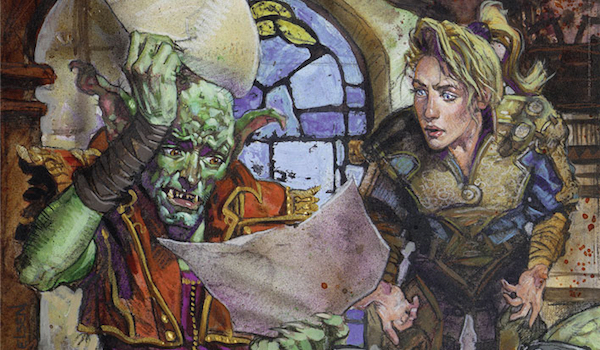
I can't say it better than Ryan Overturf, so I'll quote his Monday article directly:
Modern is a format where efficiency and tempo are dramatically more valuable than card advantage. [...] As much as I would love drawing extra cards to be the best thing we could be doing, it’s simply not true in an abstract sense.
Card advantage isn't the end-all-be-all of competitive Magic. There are plenty of other in-game mechanics that decide games, and most of them have more relevance in Modern.
[wp_ad_camp_1]
What Is Card Advantage?
In a nutshell, card advantage refers to accumulating cards at a faster rate than opponents.
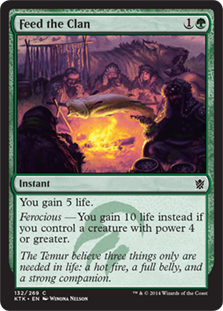 These "cards" take different forms depending on the matchup. Against Burn, a deck that wants to throw six Lightning Bolts at your face, Feed the Clan is a card advantage spell. Specifically, it's Ancestral Recall. A ferocious-enabled Feed essentially draws you three copies of Counterspell and casts them for you.
These "cards" take different forms depending on the matchup. Against Burn, a deck that wants to throw six Lightning Bolts at your face, Feed the Clan is a card advantage spell. Specifically, it's Ancestral Recall. A ferocious-enabled Feed essentially draws you three copies of Counterspell and casts them for you.
For a less obvious example, against a removal-packed deck light on board wipes, Spectral Procession is a card advantage spell. Here, it "absorbs" three Terminates. We saw this example in full force at GP Los Angeles, when Matt Nass destroyed Jeskai Control with his GW Tokens deck.
Playable card advantage spells in Modern are ones that only conditionally provide card advantage, like Feed the Clan or Spectral Procession. These aren't card advantage spells in a vacuum. More traditionally, "card advantage" refers to the actual process of drawing cards. This article primarily discusses the classic card advantage signifier of cards-in-hand, and not the conditional, "virtual" card advantage of Feed the Clan. It also examines the opposite side of the same coin: card disadvantage as it refers to hand size.
Proving the Premise
I opened this article with Ryan's loaded claim that card advantage is less valuable than other in-game mechanics in Modern. This section defends that claim by looking at how important card advantage is to the top ten Modern decks as of this month.
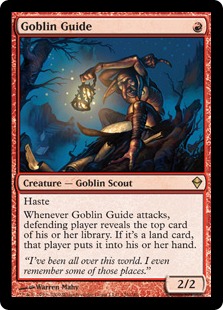 We can divide Modern's top ten decks into three groups: ones to which card advantage is very important, ones to which it's hardly important, and ones to which the importance of card advantage varies greatly based on the matchup. Obviously, card advantage carries various degrees of usefulness depending on the matchup for every deck. But I think that some decks, especially interactive ones, have a wider "usefulness spectrum" than others. Burn, for example, very rarely tries to generate card advantage, preferring instead to use tempo to get ahead on the board and damage to kill opponents before card advantage starts to matter. Goblin Guide embodies this philosophy perfectly, drawing opponents cards over the course of a game, but banking on opponents never being able to capitalize on that card advantage.
We can divide Modern's top ten decks into three groups: ones to which card advantage is very important, ones to which it's hardly important, and ones to which the importance of card advantage varies greatly based on the matchup. Obviously, card advantage carries various degrees of usefulness depending on the matchup for every deck. But I think that some decks, especially interactive ones, have a wider "usefulness spectrum" than others. Burn, for example, very rarely tries to generate card advantage, preferring instead to use tempo to get ahead on the board and damage to kill opponents before card advantage starts to matter. Goblin Guide embodies this philosophy perfectly, drawing opponents cards over the course of a game, but banking on opponents never being able to capitalize on that card advantage.
Card advantage-reliant decks (1/10): Jeskai Control
Varies (2/10): Jund, Abzan Company
Tempo-reliant decks (7/10): Tron, Infect, Burn, Affinity, Scapeshift, Merfolk, Gruul Zoo
The numbers indicate that card advantage is not a prime mechanic in Modern. So does experience. There's a reason Disrupting Shoal performs so well for me. It's the same reason I would play four Force of Wills without hesitation. Countering Siege Rhino for zero mana and two cards might not be game-winning in Legacy, but it can certainly be nuts in this format. On the other hand, there's also a reason I struggled to get Day's Undoing off the ground. Three mana might seem like a very small price to pay for seven cards, but even that apparently minimal tempo loss can translate to game losses in Modern.
The Control Conundrum
Besides Ancestral Vision, which has a significant cost of its own, these traditional card advantage spells carry a hefty mana cost. Just look at the most efficient card advantage tools of formats past: Jace, the Mind Sculptor, Fact or Fiction, and Stroke of Genius all gouge players heavily for mana.
It follows that modern card advantage tools cost more mana than turn-four decks of the aggro, combo, and tempo varieties can pay comfortably. This predicament basically dooms card advantage generators to live in control decks. And control is far from the strongest archetype in Modern.
Card Advantage: Past to Present
Card advantage was Magic's first major in-game mechanic to be "discovered" by top players. Armed with the knowledge that more cards invariably equated to more wins, players radicalized their deckbuilding processes. Brian Weissman's 1996 deck, The Deck, was feared and venerated, and remains to this day a prime example of winning via card advantage.
The Deck, by Brian Weissman
Here's a quote from Mike Flores on The Deck:
The Weissman deck (affectionately called The Deck) concentrated solely on defense; while most other players divided their resources between both offense and defense, this philosophy chose to concentrate almost exclusively on one side of the game only... effectively doubling their prowess in that regard. The card mix was equal parts selection, speed, and efficiency. While The Deck may have taken a long time to win, it played from the first turns of the game with answers like Red Elemental and Swords to Plowshares. Even its kill cards played blocker while serving in the air: Serra Angel was the Blinding Angel or Morphling of her day, and Mirror Universe played both life gainer and game winner.
This quote reveals a lot about the current state of Magic, and specifically, about how dramatically the game has changed in twenty years. I've heard cries since Modern's inception from players aching to play a "true control" strategy in the format, and their descriptions of this dream deck tend to sound like Flores's analysis of Weissman's. Let's break down the elements of this Flores excerpt.
The card mix was equal parts selection, speed, and efficiency.
Here's where things start to go wrong. If a control deck is almost all answers, those answers need to be more efficient than the cards they answer. Modern's best cards are proactive questions: Lightning Bolt, Tarmogoyf, Liliana of the Veil. Using Negate and Mana Leak to keep up with these threats isn't exactly ideal for control mages.
Even its kill cards played blocker while serving in the air: Serra Angel was the Blinding Angel or Morphling of her day.
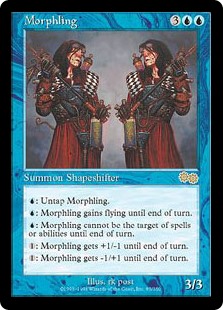 Serra Angel, Blinding Angel, and Morphling all look decidedly unimpressive now. But during their respective reigns, each of these creatures was a real pain to remove, played both offense and defense, and provided more pressure than any other one card in the format. Some creatures exist in Modern with similar credentials, with Tarmogoyf perhaps exemplifying the Serra Angel legacy. But Goyf shines in decks more dedicated to tempo than to card advantage.
Serra Angel, Blinding Angel, and Morphling all look decidedly unimpressive now. But during their respective reigns, each of these creatures was a real pain to remove, played both offense and defense, and provided more pressure than any other one card in the format. Some creatures exist in Modern with similar credentials, with Tarmogoyf perhaps exemplifying the Serra Angel legacy. But Goyf shines in decks more dedicated to tempo than to card advantage.
Up until very recently, go-long, card advantage-focused decks have not had access to a "Morphling" in Modern. Nahiri, the Harbinger stands to change that. It's no coincidence that the previously unplayable Jeskai Control suddenly looks viable at 6%. Nahiri offers the deck a unique way to turn the corner early and win games by turn six, a basic requirement of all decks in this turn four format.
Notably, Jeskai Control often wins via card advantage, or "stabilizing." But a significant chunk of the time, it instead secures victories by out-tempoing opponents with Snapcaster Mage and Lightning Helix or by cheesing them with an Emrakul.
Breaking Card Advantage
Every so often, a cheaper card advantage engine is printed. Dark Confidant is the fairest example. While he's easy to counter, an unchecked Bob will quickly show his controller the power of inexpensive card advantage. 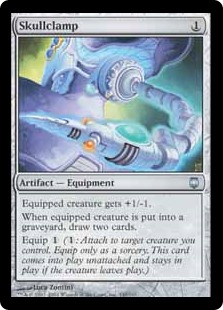 Speaking of scenarios that aren't coincidences, the Bob-loving Jund has remained Modern's best deck despite multiple bannings throughout the format's existence.
Speaking of scenarios that aren't coincidences, the Bob-loving Jund has remained Modern's best deck despite multiple bannings throughout the format's existence.
Since he's so answerable, Dark Confidant might not earn the "broken" tag. But spells that fulfill his same function often devastate formats. Skullclamp, Gush, and Treasure Cruise were all banned from almost every format for providing cards at too light a price. With efficient card advantage providers legal, formats start to revolve around card advantage more and more. Legacy, a format housing Jace, the Mind Sculptor and Brainstorm, is far more card-advantage-focused than Modern.*
[su_spoiler title="* Aside on definitions of tempo" style="fancy" icon="arrow"]I'm well aware that "tempo decks" are some of the best in Legacy, which isn't as tempo-centric a format as Modern. We mustn't confuse tempo the deck archetype, which applies pressure quickly before disrupting opponents, with tempo the in-game mechanic, or the concept of time and mana advantage. Ironically, "tempo decks" like Temur Delver and Death & Taxes tend to excel in formats driven by card advantage, and to suffer in those driven by tempo, which are in turn ruled by aggro and midrange decks.[/su_spoiler]
Accepting a Disadvantage
What's the strategic incentive to admit card advantage is overrated in Modern? If it stopped at "I won't try to play Thirst for Knowledge," I don't know that this discussion would merit an entire article. But I think Modern players have a lot to gain from doing away with their fears of card disadvantage.
Finding Sleepers
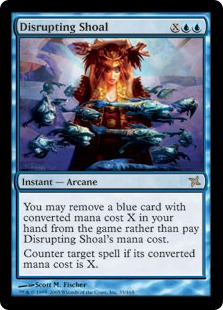 I sang Disrupting Shoal's praises above, but it's not a card you can really oversell. Shoal excels in matchups where card advantage doesn't matter at all. Burn, Tron, and any strain of linear combo struggles immensely against this card, which trades a resource players are supposed to care about---cards in hand---for one much more valuable in tempo-focused matchups: mana. Sheridan wondered this week why more decks aren't packing the Temur Delver favorite. I think it's because players are too afraid to throw away cards.
I sang Disrupting Shoal's praises above, but it's not a card you can really oversell. Shoal excels in matchups where card advantage doesn't matter at all. Burn, Tron, and any strain of linear combo struggles immensely against this card, which trades a resource players are supposed to care about---cards in hand---for one much more valuable in tempo-focused matchups: mana. Sheridan wondered this week why more decks aren't packing the Temur Delver favorite. I think it's because players are too afraid to throw away cards.
Our Modern Nexus overlord (yeah, I went there) also mentioned the possible inclusion of Snapback in more Modern decks. I've tried Snapback myself to compensate for tempo losses incurred by casting a three-mana sorcery in a Delver deck, and came to the conclusion that it's generally not efficient enough for what it does. Blue already has Vapor Snag, which tags a small bonus ability onto a card that, let's face it, only costs one mana. Bounce spells are supposed to cost one mana, and such a small price reduction doesn't earn the card lost to Snapback's alternate cost.
Now, hard-answering a Tarmogoyf? Here's a one-mana effect that's quite a bargain. Even Path to Exile doesn't do it without passing opponents card advantage and tempo. No wonder Spell Snare sees so much play. In this case, another one-mana reduction is totally worth it, as Spell Snare is already so efficient and unique. I have no problem pitching a card to Shoal to counter Tarmogoyf, especially since Shoal does so much more, sniping Guide and Map and Goryo's Vengeance for free before hard-countering anything for XUU in the late-game.
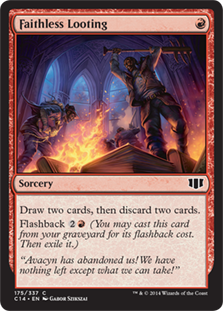 Another overlooked card I think has wider potential in Modern is Faithless Looting. My love for this card is no secret, and I've always been dismayed to see it relegated to dredge decks and graveyard strategies. Looting is a two-time selection tool that trades card advantage for efficiency, something Modern generally rewards. I don't doubt we'll eventually see this card play some unintuitive roles as new design space opens up with further printings.
Another overlooked card I think has wider potential in Modern is Faithless Looting. My love for this card is no secret, and I've always been dismayed to see it relegated to dredge decks and graveyard strategies. Looting is a two-time selection tool that trades card advantage for efficiency, something Modern generally rewards. I don't doubt we'll eventually see this card play some unintuitive roles as new design space opens up with further printings.
And about new printings, always keep an eye out for spells that trade card advantage for efficiency. Something like a four-mana 4/4 that allowed players to skip a draw step and reduce its cost by two would definitely see play in Modern, although it would prove less effective in formats less tempo-oriented.
On Mulligans
More than other formats, Modern rewards a multitude of archetypes for taking very aggressive mulligans. Even midrange decks, which traditionally don't mulligan often, regularly go to five cards to find Stony Silence or Grafdigger's Cage.
At its most basic, a mulligan gives players the chance to try a new hand by assuming some degree of card disadvantage. It stands to reason that in a format less defined by card advantage than by tempo, mulligans present more of a potential benefit than elsewhere. Shedding an irrational fear of card disadvantage should help some players take trickier mulligans instead of keeping five-card hands that are what I like to call "incompetent"---incapable of getting the job done.
Keep Your Head on the Board
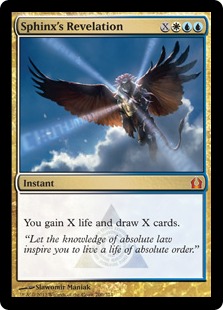 As a lover of combat, mulligans, and all things tempo, I find the dynamics between mechanics like card advantage and tempo in Modern fascinating. Card advantage's awkward positioning as a Modern mechanic intrigues me, and I'm glad Ryan mentioned it this week and inspired me to flesh out my theory.
As a lover of combat, mulligans, and all things tempo, I find the dynamics between mechanics like card advantage and tempo in Modern fascinating. Card advantage's awkward positioning as a Modern mechanic intrigues me, and I'm glad Ryan mentioned it this week and inspired me to flesh out my theory.
I'm always eager to discuss these theories in the comments, so don't be afraid to drop a line. Until then, may you play to the board and leave your Sphinx's Revelations at home.





Solid article, and it reinforces something I’ve long believed about this format, which is that card advantage is not the be-all, end-all. Sure, getting some of it always helps, but even decks that employ 2-for-1s (such as Jund and its Kolaghan’s Commands and Bobs) are also concerned with establishing their tempo.
As for the cards you mentioned… I think part of what has held Disrupting Shoal back is the lack of decks blue-heavy enough to employ it (since you need a cluster of 1-2 CMC blue cards, and perhaps a smattering of 3s and 4s if you want to give it more reach). In the case of Faithless Looting, I think it’s that a somewhat questionable topdeck if you’re not employing a graveyard strategy, and that Modern players aren’t attuned to the joys of looting the way someone who has experience with a card like Dack Fayden does. However, these situations do strike me as fixable.
“In the case of Faithless Looting, I think it’s that a somewhat questionable topdeck if you’re not employing a graveyard strategy…”
I think part of the issue here is that folks tend to imagine “topdecking” as something that happens when your hand is empty, and thus FLooting is a dead draw in such a situation. But this sort of assumes that you’re playing as though you didn’t know FLooting was in your deck.
Typically, I see people make their land drops every turn they’re able, regardless of whether they need the mana or not. After all, what else are you going to do with that land you drew? With the exception of maybe holding one spare as a bluff, every land hits the table, no matter how superfluous it is. All you have to do to utilize Faithless Looting is change that habit.
Once you have enough lands out to cast your biggest card, you start holding the extra lands instead of dropping them. Then, when you “topdeck” that FLooting, you’ve got two extra lands to pitch, making FLooting into essentially a 1-mana Divination. Played smart, FLooting is actually plenty good as a “topdeck”.
Agree with this entirely and have utilized this principle to some success in GRx Moon variants. There are chunks of turns with those decks during board stalls that I horde lands in hand, hoping to topdeck the looting. When I do, I can suddenly draw 4.
Card advantage is less important in modern, sure. But I disagree that it isn’t important–there is a deck that enables BACKBREAKING card advantage, and it has some pretty decent matchups against the top tiers:
Wafo-Tapa style Draw-Go
The original list played a 26 land manabase (pre KTK fetches so not worth comparing), and the following 34 spell suite:
4 cryptic command
4 spell snare
2 logic knot
2 remand
2 shadow of doubt
4 think twice
4 esper charm
2 sphinx’s revelation
4 path to exile
2 supreme verdict
1 wrath of god
2 snapcaster mage
1 white sun’s zenith
With a sideboard of
3 thoughtseize
2 oust
2 stony silence
2 teferi, mage of zhalfir
1 celestial purge
1 disenchant
1 wrath of god
1 Elspeth, Knight-Errant
1 Elspeth, Sun’s Champion
Bear in mind that he brought this deck out at GP Boston-Worcestire a good while back, but there are a number of us with a lot of success at local and regional events with lists that mirror his, +/- 3-4 cards in the mainboard and with sideboards that are functionally identical or functionally +/- 5 or 6 cards from each other. For example, Jund and Abzan midrange are extremely easy matchups with mainboards set up like that. Decks like Affinity and merfolk are surprisingly good matchups for decks with lots of wrath effects/spell snares and the card draw to consistently find them on time, and repeatedly within a matchup. Piles of countermagic make blue mirrors strongly favored, and make fast combo decks reasonable to compete with. Card advantage may not necessarily be the most important thing in the format, but much like in Legacy and Vintage, if you CHOOSE to make it the most important axis within a matchup (like jund and abzan frequently do, alongside this deck), the tools exist to overwhelm your opponent on that axis. It’s really no different than what affinity seeks to do with the speed barrier in modern, or infect with forcing interaction.
I never said card advantage wasn’t important, just that it’s overrated in Modern. Of course many matchups revolve around card advantage. But it’s silly to build a deck that always relies on card advantage to win, because those decks are bad in this format.
As for your example, Wafo-Tapa draw-go was viable in Modern for a very limited period and has been an outdated, unplayable deck for quite some time. Doesn’t “there is a deck” imply that the deck exists in some capacity? Even during its “prime,” the deck did not put up impressive numbers. It’s actually a case study for why card advantage-centric decks struggle in Modern.
I cited the deck’s evolution, Nahiri-featuring Jeskai Control, as the only current top deck that constantly does win via card advantage. The only reason Jeskai is suddenly succeeding now is Nahiri, a card that allows the deck to win in a way other than accumulating card advantage, something necessary for Modern success.
Last winter, a player managed to I believe 12-3 or 11-4 (I forget what the story was exactly, but at one point he conceded a won match to someone who needed the pro point) the modern GP with an identical mainboard spell suite to the wafo-shell, +/- I think the shadow of doubts. It’s not an unknown deck–he missed having his list published on breakers. It’s not that the deck isn’t viable–it boasts excellent jund, affinity, and merfolk matchups, with poor matchups against infect and tron of all flavors (almost an unwinnable matchup).
That’s one player at one tournament and he didn’t even Top 8. Even bad decks can win in Modern. Everyone has different standards for “viable.” Mine are that if a deck is a worse version of an existing deck, or if it can’t win consistently, it’s not viable, because Modern has plenty of decks that can.
I think the kind of playable card advantage overlaps with the other article you wrote about playable creatures in modern. Either they blank commonly played opposing removal, or they «cast a spell», getting you up on cards while building a board. As a death and taxes player i can appreciate my threats doing double duty, getting me up on «virtual» cards without losing tempo.
The kind of card advantage you speak of, trading tempo for more cards in future turns, is, i agree, not that great in this format.
In an otherwise good article, the fact that you refer to UWr as an unplayable deck before Nahiri was printed leaves me to believe that despite the nature and quest of this site, you still can’t see the correlation between how many plays a deck and how many copies usually makes it to a top 8. Astoninishingly enough, some decks appear to be quite unplayable until someone makes a top 8 with it. This of course prompts people to pick it up and the deck is once again recognized as being viable. See: G/R Tron, Merfolk, Scapeshift etc etc etc.
The reason for UWr’s success recently was most likely in thanks to the increase of aggressive linnear decks after Twin was banned. But mostly because more people started sleeving it for tournaments.
I know for a fact it was a good deck before Nahiri, and if PT and GP wins Isn’t enough to prove that point I don’t know what is.
Imagine Jund/Infect/Affinity as suddenly being 1-2% of the meta and try to calculate how far it would be between them making top 8’s or winning big tournaments.
Can you tell me specifically what Pro Tour and GP wins or Top 8s you’re referring to? Or show me the data that helped you know for a fact the deck was good in Modern pre-Nahiri?
You’re kidding, right? It won PT Born of the Gods. Then proceeded to win the GP right after. Before that Shahar won worlds with it. Granted, it’s not a lot of Modern games but still.
I’m not the writer of a Modern site that prides itself on collecting data to predict and evaluate the meta, so you’ll forgive me for just saying that I’ve seen the deck in the hands of capable players for years and the only time it was a truly bad choice was when Abzan claimed a huge % of the meta last year.
Now please explain how UWr was otherwise unplayable then fess up to the fact that sometimes good decks fall of the radar but that doesn’t necessarily mean that they’re unplayable. Do you have any experience with the deck yourself?
Don’t take this wrong. I thought you har a lot of good points in your article and this is a small thing to argue about. But what you said about UWr is not true.
2014 was a long time ago, and Modern is totally different now. When I say something like “Jeskai Control was bad pre-Nahiri,” I’m referring to the metagame immediately before Nahiri came onto the scene. During that time, Jeskai was unplayable.
There have been plenty of decks in Modern’s long history that put up high-profile finishes that just aren’t viable anymore. This article – and all my articles, unless I specifically state otherwise – should be read in context of the current Modern metagame, and not one from two or more years ago.
Unfortunately I’m all about the Benjamins when it comes to determining whether a deck is good or not. If a deck doesn’t have numbers to back up its viability in a given metagame, i judge it as guilty until proven innocent. That’s just what works for me; if you were having success with UWR pre-Nahiri, awesome! But according to data aggregate sites like mtgtop8, you were pretty much the only one.
We’ll have to agree to disagree then. My Point was largely that a lot of decks hibernate between peaks in results. G/R Tron was a great example of that. All it takes is one big win and done writers talking about a deck favorably to make the meta share triple or quadrople. With more people playing the deck it has a greater chance to get on the scoreboard.
I’m not talking about myself as I don’t play the deck much. But there’s no doubt in my mind that it is and has been a tier 2 deck for quite a while.
I immediately thought of this article when the new Unsubstantiate got spoiled for EMN.
I think Unsubstantiate won’t see much Modern play because it costs two mana. That’s a severe tempo loss in this format.
Sadly, my testing indicates this will indeed be the case. 2 mana is just too much to hold up unless you have a plethora of ways to spend it.